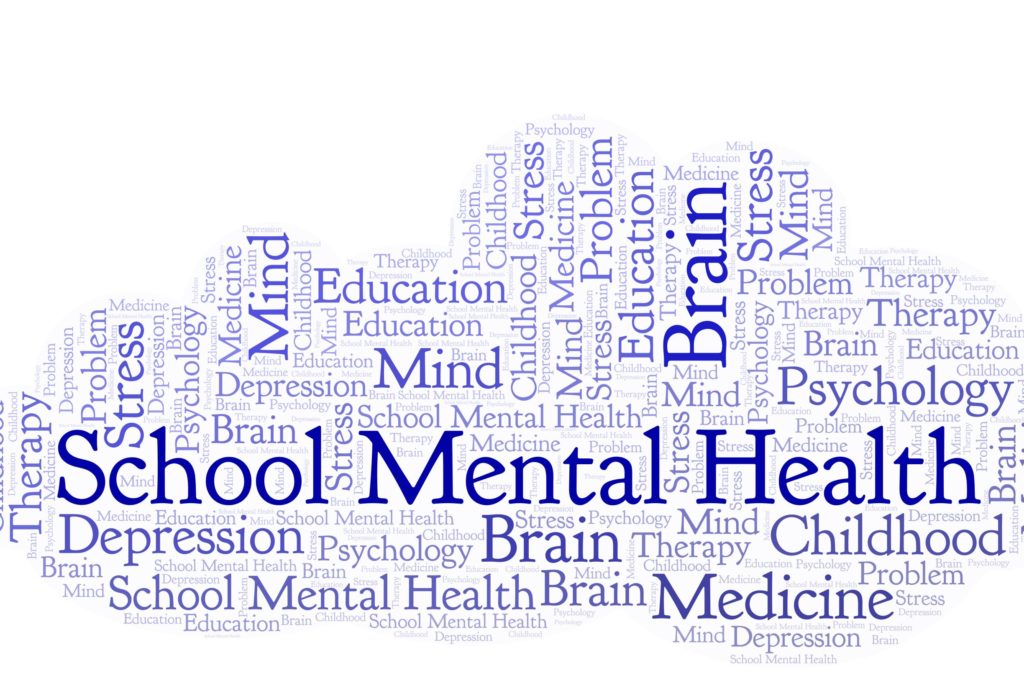School mental health services are essential to maintaining safe and supportive educational environments. According to the Center for Disease Control (CDC), a mental disorder is defined as a serious disruption in the way a child learns, behaves, or handles emotions causing the child serious impairment in his or her daily living.
The CDC reports the most commonly diagnosed mental disorders in children are attention-deficit/hyperactivity disorder, behavior disorders, anxiety, and depressive disorders. The U.S. government reports that 17% of young people will experience an emotional, mental or behavior disorder. And only 20% of those youth diagnosed with a mental disorder actually receive treatment. Therefore, it is critical for educators to know the potential causes and symptoms of mental disorders as well as the impact on student learning. Schools can significantly reduce the negative effects that mental disorders have on learning by early identification.
What Educators Should Know
Causes
It is important to understand the basic causes of mental disorders. There are three major categories of causes: biological (genetics, brain structure and functioning); psychological (cognition, personality, learning style, early life experiences); and socio-cultural (environment, ethnicity, gender, religious orientation, race and culture). The starting point after symptoms are presented is to evaluate the child by gathering information from primary caretakers, teachers, school specialists, and even medical professionals. In addition, the child would be observed and interviewed using specialized assessments appropriate for the symptoms presented.
It is important for educators to know the major symptoms to identify issues early. The sooner a child is evaluated, diagnosed, and receives treatment, the more likely of a positive outcome for the child.
General Symptoms and Impact on Student Learning
The following is a summary of the major symptoms of the four commonly diagnosed mental disorders of children and adolescents. Please keep in mind that the presentation of each disorder may appear differently child to child.
Attention-Deficit/Hyperactivity Disorder (ADHD) is a neurodevelopmental disorder that is characterized by two significant symptoms: 1) inattention and/or 2) hyperactivity–impulsivity. Both types of ADHD symptoms can have a great impact on a student’s ability to learn.
ADHD (predominantly inattentive type) symptoms can be generally categorized as lacking attention to details; lack of attention/focus; easily distracted; appears not to be listening; inability to finish a project or task; forgetful/lack of organizational skills; and distaste for tasks requiring large amounts of cognitive effort.
ADHD (predominantly hyperactive/impulsive type) symptoms are generally presented as: constantly in motion; moves about when inappropriate to do so; cannot play quietly; talkative; and an inability to wait/exhibit patience. More so, when the inattentive symptoms are coupled with the symptoms of hyperactivity and impulsivity (ADHD combination type), this type of ADHD produces an even greater negative impact on a child’s learning.
Behavior Disorders, the next most prevalent category of mental disorders diagnosed in youth, can significantly impact the functioning of a child’s life by producing negative interpersonal problems due to the symptoms that are presented.
Oppositional Defiant Disorder (ODD) is characterized by three major categories of symptoms that vary in terms of persistence and frequency: 1) angry/irritable mood; 2) argumentative/defiant behavior; and 3) vindictiveness. These symptoms can interfere with learning of the child and of his/her classmates. They have regular conflict with adults and peers.
Conduct Disorder (CD) is a more serious behavior disorder characterized by four major categories of symptoms that vary in terms of persistence and frequency: 1) aggression towards people and animals; 2) destructive; 3) deceit or theft; and 4) serious violations of rules.
The difference between the two behavior disorders is that CD contains symptoms that are more overt behaviorally. Children with CD are often truant or leave school grounds without permission; are more physically aggressive with others and destructive of school property.
Anxiety Disorders are the third most prevalent category of mental disorders diagnosed in youth. Anxiety can be defined as a person’s reaction to a stressor (whether real or imagined) that impacts a person’s cognitive, psychological, and physical states of being.
An anxiety disorder is described in terms of how chronic it appears, intensity of its presence, and the severity of the child’s ability to function. Children may appear to be extremely fearful or show extreme dislike of social events and gatherings; present speech concerns such as selective mutism; extreme fear of a certain object, person, or place; or extreme agitation or upset when not in the presence of his or her caretaker. Again, all of these symptoms can impact a child’s attendance, attention, development of positive social relationships, and overall academic success.
Depressive Disorders that are most often diagnosed in childhood and adolescence are Disruptive Mood Dysregulation Disorder (DMMD), Major Depressive Disorder (MDD) and Dysthymia (sometimes called Persistent Depressive Disorder).
DMMD is categorized by an irritable mood and frequent tantrums in young children. MDD is the most common depressive disorder, and Dysthymia is a low-grade persistent depressive disorder.
Symptoms of MDD include generally depressed mood; loss of interest or joy in activities usually found pleasurable; eating or sleeping too much or too little; increase or decrease in regular activity; fatigue; feelings of guilt; lack of concentration; and suicidal ideation. Although a child will likely not be disruptive in class, MDD will impact the child’s ability to be academically and socially successful.
Providing Support in Schools
Educators can help promote positive outcomes by implementing early identification of potential risk factors, providing interventions, and strengthening protective factors in their schools. All of these efforts will help decrease the likelihood of a negative impact that a mental disorder may have on a child’s academic, social, and/or emotional development. Also, disciplinary matters will be largely affected and reduced in amount and severity when mental health services are properly employed.
As a first line of support, most schools employ school counselors. Some schools may even have school-based mental health therapists, whether employed by the school/school district or an outside agency. There are major differences between the role of school counselors and school-based mental health therapists, although they usually work in tandem with students presenting mental health concerns.
School counselors generally provide individual, group, and crisis counseling. Their focus is on academic, social/emotional, and career areas of the students. They provide short term/brief counseling strategies. School-based mental health therapists (or school social workers) provide long-term therapeutic services to help students overcome behavioral, emotional, and social issues.
Both school counselors and school-based mental health therapists provide student support services but should not be the only source of assistance that a child receives. In addition, school faculty and staff should recognize the challenges that some students may face and create a safe space for students where they feel accepted and connected. These individuals spend enormous amounts of time with the child; therefore, involving the child’s parent and seeking assistance from appropriate school staff are necessary.
Providing Support to Parents and Families
Parents and families that have general concerns about their child’s mental health status can seek consultation from the school counselor or school-based mental health therapist. Both individuals will be able to provide parents with the school services and support that can be offered as well as refer parents/families to outside treatment facilities.
The evaluation process of a child can either begin at a school or clinical setting. Often the starting point will originate where the child is presenting the most symptoms. There are many behavioral agencies that can provide psychological and behavioral assistance to children and their families that range in severity of a mental disorder. These individuals also work with the school faculty and staff to ensure there is a continuum of care provided for the child.
The past several months have been challenging, and the long term effects on children and adolescents are still unknown. The need for mental health services in schools may rise to unprecedented proportions as time goes on. It is important that schools and families work together to provide what children need so that they can have promising futures.
References
American Psychiatric Association. (2013). Diagnostic and Statistical Manual of Mental Disorders. (5th ed.). Washington, DC: American Psychiatric Association
National Center for Health Statistics, & Centers for Disease Control and Prevention. (2020). Retrieved from: https://www.cdc.gov/ncbddd/adhd/data.html




